摘 要
本次毕业设计的题目是内燃机后油封盖机械加工工艺规程设计及系列夹具设计。其主要内容包括后油封盖的零件分析、加工工艺规程设计和专用夹具设计等三大主要部分。
本论文中对零件进行了详细分析,在此基础上对零件加工要求进行分析,最终确定毛坯材料,选择定位基准,并留出适当的加工余量。综合分析制定出零件加工工艺路线。得到工艺路线后,需要对工艺路线中的具体参数进行计算,计算加工余量,计算切削用量,并根据计算结果选择机床,此外还计算了加工过程中的辅助时间。
设计专用夹具需要做设计前的研究工作、确定总体方案(研究和计算定位误差、确定和计算夹紧力)、编制夹具体图及装配图。工艺规程设计的重点主要是拟定工艺路线和工艺计算。拟定工艺路线要充分考虑实际情况,尽可能的节约生产成本,提高生产率。工艺的计算需要计算工序加工、确定机床型号和计算动作时间及辅助时间。
关键词:工艺规程设计;专用夹具设计;加工余量;工艺计算
Abstract
The graduation design topic is internal-combustion engine rear oil seal seat. The main contents include the analysis of the components, technical process design and special fixture design, the three main parts.
This thesis of parts are analyzed in detail,On the basis of the parts processing requirements analysis,Ultimately determine the blank material, choose the locating datum, and stay out of the appropriate machining allowance. Comprehensive analysis and formulates the components processing technological route. Get process, need to process in the specific parameters are calculated, calculate the machining allowance, cutting parameters, and according to the calculation results the select tool, also calculated during the processing of the auxiliary time.
Special jig design main steps have design the preparing work before, overall scheme of the sure (positioning error analysis and calculation and clamping force and the determination of calculation), rendering the assembly drawing fixture and fixture drawing. The focal point of design process regulation is mainly develop process route and process calculation. Process route worked fully consider the actual situation, as far as possible to save the production cost, improve the productivity. Process calculation mainly includes process calculation, machine tool selection and mobile time and auxiliary time calculation.
Keywords: Process planning; Special jig design;Machining allowance;Process calculation
目 录
摘 要III
AbstractIV
1 绪论1
1.1本课题研究的内容及意义1
1.2国内外的发展概况1
1.3本课题应达到的要求1
2 零件的分析2
2.1 内燃机后油封盖的作用2
2.2 零件的工艺分析2
3 内燃机后油封盖工艺规程设计5
3.1 确定零件生产类型及毛坯的制造形式5
3.2 零件材料的选择5
3.3 基准的选择6
3.2.1 粗基准的选择6
3.2.2 精基准的选择7
3.4 拟定工艺路线7
3.4.1零件各表面加工顺序的确定7
3.4.2 工序的组合8
3.4.3 零件工艺路线方案的对比8
3.4.4 零件工艺路线方案的分析与选择10
3.4.5 零件机械加工余量确定10
3.5 各工序所需机床及工艺装备的选择10
3.5.1机床的选择10
3.5.2工艺装备的选择10
3.6 工艺计算11
3.6.1 后表面12
3.6.2 前表面13
3.6.3 底平面20
4 夹具设计23
4.1 机床夹具的概述23
4.1.1 夹具的组成23
4.1.2 机床夹具的功能23
4.1.3 机床夹具需要满足的要求24
4.2 内燃机后油封盖系列夹具设计24
4.2.1 内燃机后油封盖系列夹具的技术要求24
4.2.2 设计夹具的选择26
4.2.3 钻孔专用夹具26
4.2.4 车内外圆专用夹具28
4.2.5 铣底平面专用夹具30
4.3 专用夹具的配合公差32
4.4 定位误差的分析与计算32
4.4.1 定位误差的分析32
4.4.2 定位误差的计算34
4.5夹紧力的的分析与计算36
5 结论与展望38
5.1 结论38
5.2 不足之处及未来展望38
致 谢39
参考文献40
附 录41
1 绪论
1.1本课题研究的内容及意义
本课题研究的内容是:内燃机后油封盖机械加工工艺规程设计及系列夹具设计。在机械行业,机床夹具是不可缺少的重要工具,能确保机床加工质量、提升生产率、降低生产成本、使劳动强度降低、能够使生产过程实现自动化,专用夹具的采用还能增加机床的作用及使机床的使用价值扩大,因此,系列夹具在机械行业的价值无可估量,专用夹具的采用成为大批量机械加工生产不可或缺的条件之一。
近些年来,随着数控机床、加工中心、柔性制造单元、柔性制造系统等现代或加工设备的广泛应用,使传统的机械加工的指导方法发生了重大变革,夹具的功能已经从过去的装夹、定位、引导刀具,转变为装夹、定位。而数字化的设备加工功能的广大化。给今后夹具的快速定位、快速装夹提出了更高的要求。 夹具是机械加工不可缺少的部件,在机床技术向高速、高效、精密、复合、智 能、环保方向发展的带动下,夹具技术正朝着高精、高效、模块、组合、通用、经济方向发展。
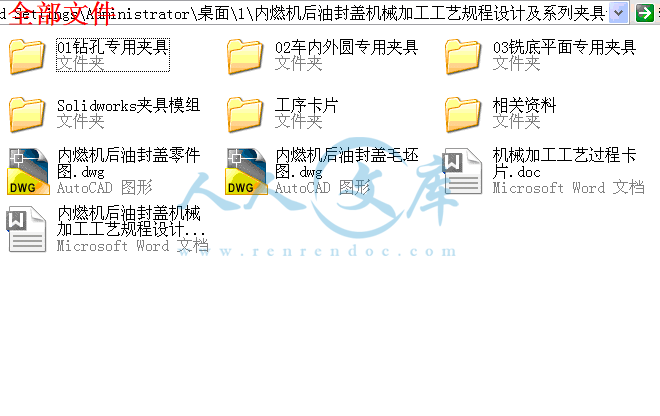
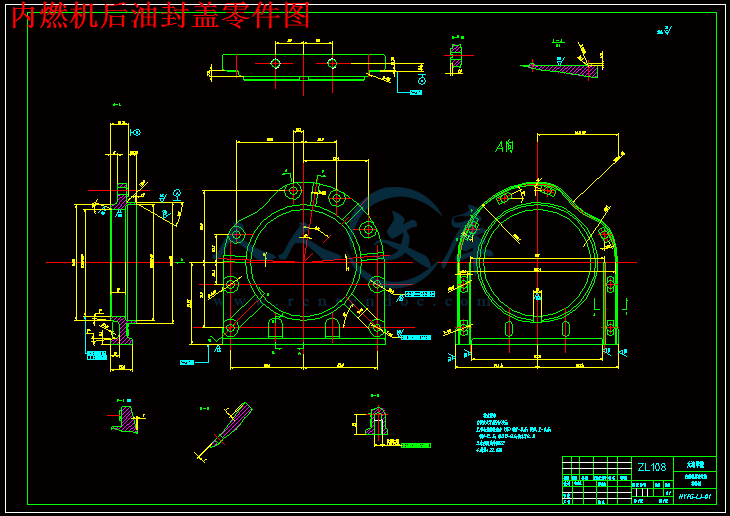
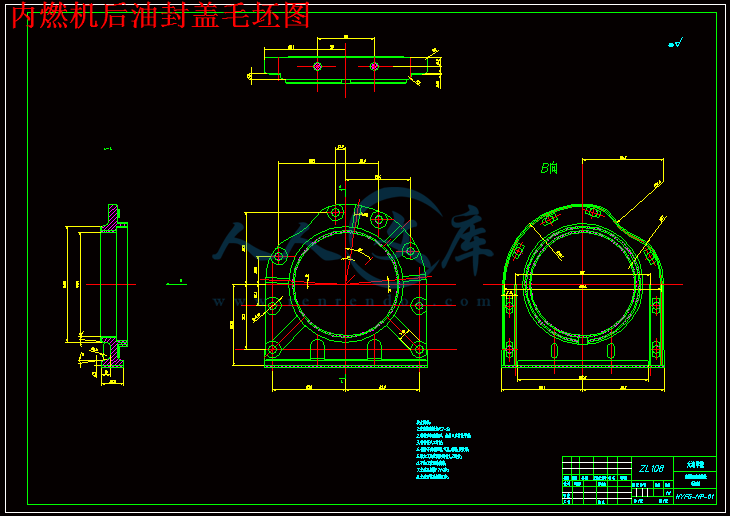

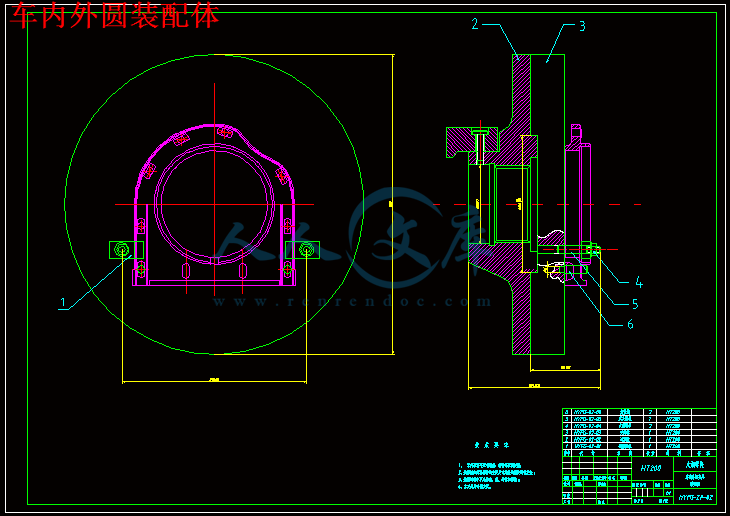
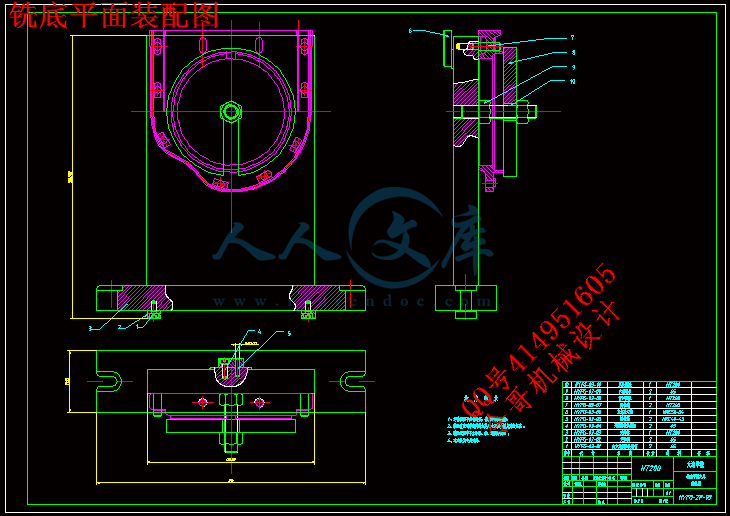
 川公网安备: 51019002004831号
川公网安备: 51019002004831号